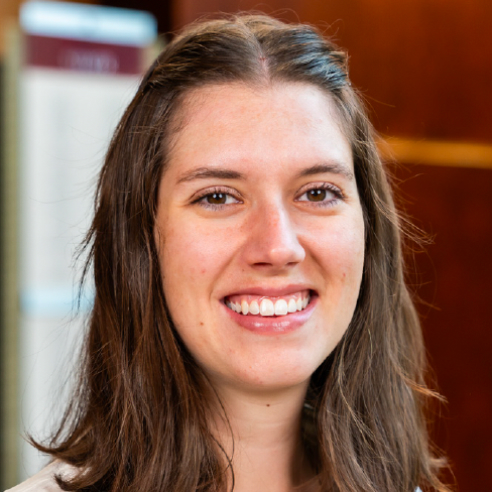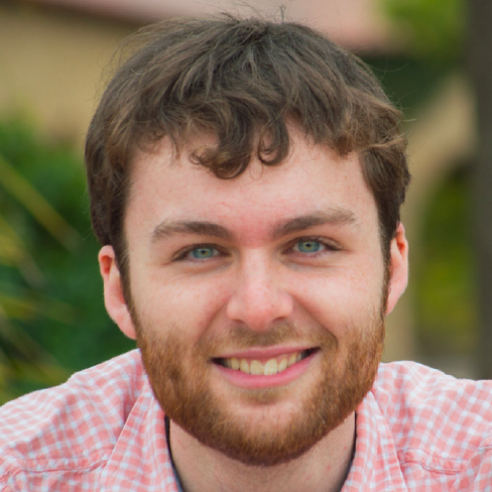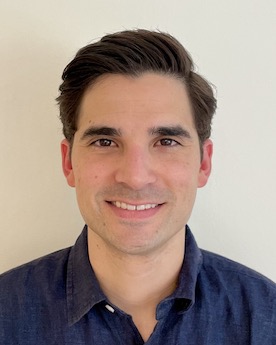

University of Utah
Appointed in 2024
Metastasis, which includes the dissemination of tumor cells from a primary site and subsequent colonization of faraway sites, is the primary cause of cancer deaths. This process requires a failure of our immune system to recognize and destroy metastasizing cancer cells. As such, targeting cancer during the metastasis step will help create therapies for patients with many different types of cancers (breast, prostate, colon, etc.).
Dr. Marija Nadjsombati will investigate the immune response during metastasis in Dr. Alana Welm’s lab at the University of Utah. Dr. Nadjsombati will use mouse models of breast cancer which faithfully recapitulate metastatic propensity. Nadjsombati will develop new cancer models and investigate their transcriptional regulatory networks to decipher the role of T cell regulation in metastasis. These studies will provide novel insights on both T cell regulation and on targeted therapies for cancer immunology.
Nadjsombati built her expertise in immunology as a graduate student in Dr. Jakob von Moltke’s lab at the University of Washington. There she studied a specialized type of epithelial cells, called tuft cells, which initiate immune responses in the small intestine. Nadjsombati discovered that succinate triggers the downstream signaling in tuft cells that initiates a type 2 immune response. Additionally, by comparing different mice strains, and performing genetic crosses, Nadjsombati showed that Pou2af2 isoform expression is a key regulatory mechanism that determines tuft cell frequency. With this strong immunological background, Nadjsombati is poised to make new breakthrough discoveries on the immune regulation of metastasis.


Yale University
Appointed in 1965

Stanford University /
Massachusetts General Hospital
Appointed in 1968
Read more
Stanford University / Massachusetts General Hospital
Appointed in 1968

Albert Einstein College of Medicine
Appointed in 1966
Read more
Albert Einstein College of Medicine
Appointed in 1966


University of Washington
Appointed in 1978


The Rockefeller University
Appointed in 2024
Organismal development is an elegant progression from a single cell to billions or trillions of different cells that form our tissues and organs. While much is known about development at the molecular level, important questions remain about how subcellular molecular inputs integrate with “supracellular” physical behaviors of large cell collectives to shape our tissues. Little is known about how subcellular and supracellular dynamics relate among the mesenchymal cell types that give rise to all connective tissues including skin.
Dr. Victor Naturale will make inroads into these questions using a novel vertebrate skin cell platform developed in Dr. Amy Shyer’s and Dr. Alan Rodrigues’ lab at The Rockefeller University. Dr. Naturale expects that understanding how biological organization translates across length scales will provide novel insight into diverse areas including cancer microenvironments and mesenchymal birth defects that lack a single genetic cause.
Naturale developed his interest in developmental biology as a graduate student in Dr. Jessica Feldman’s lab at Stanford University. Working largely at the molecular to cellular scale, Naturale discovered that in C. elegans the polarity scaffold PAR-3 and the transmembrane protein HMR-1/E-cadherin collaboratively build polarity networks at epithelial cell-cell contacts. He demonstrated that HMR-1 also communicates cell polarity at the tissue level. Importantly, Naturale additionally identified a novel symmetry breaking cue arising at the supracellular scale due to emergent cell-cell contact patterns. This research, and the beautiful images within, were highlighted on the journal cover. In his postdoctoral research, Naturale will translate his experience identifying supracellular cues to a novel model system with relevance to cancer and developmental diseases.

University of California, San Francisco
Appointed in 2006
Read more
University of California, San Francisco
Appointed in 2006

University of California, Los Angeles
Appointed in 1985
Read more
University of California, Los Angeles
Appointed in 1985

National Institute of Allergy and Infectious Diseases
Appointed in 1993
Read more
National Institute of Allergy and Infectious Diseases
Appointed in 1993

MRC Center, University Medical School, England
Appointed in 1985
Read more
MRC Center, University Medical School, England
Appointed in 1985


Pennsylvania State University
Appointed in 2003


Broad Institute
Appointed in 2017
New methodologies are needed to develop the next-generation of macromolecular human therapeutics that have the potential to improve our ability to treat diseases. Continuous directed evolution techniques such as phage-assisted continuous evolution (PACE) have demonstrated a transformative ability to access_x000D_
biomolecules with therapeutically relevant properties that could not have been readily accessed using conventional protein evolution methods, including improved genome editing agents, and proteases reprogrammed to cleave proteins implicated in human disease. However, PACE is greatly constrained by the requirement that it be performed in Escherichia coli, thereby precluding its application to solve important problems that require eukaryotic infrastructure, such as post-translational modification,_x000D_
chaperones that are not found in E. coli, chromatin editing or modification, subcellular localization, or organelles. I propose to design and execute a system for the continuous evolution of biomolecules in yeast, enabling access to many of these important selections. We will use this system to evolve versions of the E3 ligase MDM2 that exclusively target mutant, but not wild-type p53, for ubiquitination and degradation, demonstrating the power of eukaryotic continuous evolution to evolve proteins that are_x000D_
inaccessible to PACE, as well as generating a novel potential research tools and leads for future cancer therapeutic development.


Fred Hutchinson Cancer Center
Appointed in 2008


Rockefeller University
Appointed in 1976

Albert Einstein College of Medicine
Appointed in 1975
Read more
Albert Einstein College of Medicine
Appointed in 1975


Yale University
Appointed in 1946

University of California, San Francisco
Appointed in 2002
Read more
University of California, San Francisco
Appointed in 2002

Columbia University /
New York State Psychiatric
Appointed in 2022
Read more
Columbia University / New York State Psychiatric
Appointed in 2022
Major depressive disorder (MDD) is a psychiatric disorder with a lifetime prevalence of ~15% and is the leading cause of disability worldwide1. The societal burden of MDD is immense, causing profound personal suffering and economic loss, which has recently been intensified by the Covid-19 pandemic2. The most effective treatments for MDD, a class of antidepressants called the selective serotonin reuptake inhibitors (SSRIs), are successful in achieving remission, but only in ~40% of patients3. Despite being in use for over 50 years, it remains unknown how SSRIs modulate neural circuit function in patients that achieve remission and where these mechanisms are disrupted in those that do not. Thus, a fundamental question remains: What are cellular and molecular mechanisms that mediate antidepressant response and resistance? Defining the answers to this question could provide fundamental insights into the pathophysiology of MDD and uncover novel substrates for future precision medicine approaches.


Columbia University
Appointed in 1966

University of California, San Francisco
Appointed in 1994
Read more
University of California, San Francisco
Appointed in 1994

University of California, San Francisco
Appointed in 1978
Read more
University of California, San Francisco
Appointed in 1978

University of California, San Francisco
Appointed in 2022
Read more
University of California, San Francisco
Appointed in 2022
Speech is a defining characteristic of human cognition. It provides humans with the flexibility to convey an unlimited range of thoughts and feelings using a limited number of basic elements. Over the past decade, intracranial electrocorticography (ECOG) recordings in patients have provided invaluable insights into the neural mechanisms underlying speech perception and production. While significant progress has been made, basic questions still remain regarding the functional architecture of the neuronal circuits involved. Particularly, we do not know how the brain assembles phonemes into words, and words into meaningful goal-directed utterances. Such phonemic-to-semantic transformation relies on real-time interactions between the speech cortex and distributed memory networks that encode, store, and retrieve our lexical and semantic knowledge quickly and efficiently. The hippocampus, as a critical node in this declarative memory system, is believed to play a key role in coordinating such processes in real time.
My research seeks to elucidate the cortical-hippocampal interaction during speech perception and production, and more broadly, to unravel the interface between speech representations and long-term memory. To accomplish this, I combine ECOG recordings with 7T fMRI to measure neuronal activity simultaneously from the hippocampus and speech cortex during perception and production of speech.


Harvard University
Appointed in 1995

Albert Einstein College of Medicine
Appointed in 1964
Read more
Albert Einstein College of Medicine
Appointed in 1964


Yale University
Appointed in 2012

University of Wisconsin, Madison
Appointed in 2004
Read more
University of Wisconsin, Madison
Appointed in 2004

University of California, San Francisco
Appointed in 1974
Read more
University of California, San Francisco
Appointed in 1974

University of California, San Francisco
Appointed in 1995
Read more
University of California, San Francisco
Appointed in 1995

University of California, San Francisco /
California Institute of Technology
Appointed in 1988
Read more
University of California, San Francisco / California Institute of Technology
Appointed in 1988


University of California, Berkeley
Appointed in 2013
Ubiquitylation is a versatile post-translational modification required for most cell fate decisions. During neurogenesis, ubiquitin-dependent mechanisms ensure the irreversible transformation of neural stem cells into neurons. By contrast, the misregulation of the ubiquitylation system can set off a wide range of developmental abnormalities, from uncontrolled cell proliferation and tumor formation to neurodegeneration and cell death. Despite its medical relevance, our understanding of how ubiquitylation governs the course of human neurogenesis is far from complete. For my research fellowship, I propose to develop a large-scale screening platform to identify the ubiquitylating enzymes that promote the maintenance of undifferentiated human stem cells as well as those that facilitate the specification of neural cell fates. To better grasp the physiological parameters that underlie the directionality of cellular differentiation, I will define the collection of endogenous substrate proteins modified by the newly identified enzymes. Aside from generating a list of substrates, I aim to study the functional consequences of ubiquitylation by characterizing substrate mutants that are resistant to ubiquitylation in stem cells. Together, my results will shed light on fundamental principles of human development and potential mechanisms that cause neuronal cancers and neurodegenerative disorders.

Harvard University Medical School
Appointed in 2002
Read more
Harvard University Medical School
Appointed in 2002


Stanford University
Appointed in 1978


Harvard University
Appointed in 1990


Stanford University
Appointed in 1988

University of California, San Francisco
Appointed in 2011
Read more
University of California, San Francisco
Appointed in 2011

University of California, San Diego
Appointed in 1978
Read more
University of California, San Diego
Appointed in 1978

National Institutes of Health
Appointed in 1963
Read more
National Institutes of Health
Appointed in 1963

Dana-Farber Cancer Institute
Appointed in 2023
Read more
Dana-Farber Cancer Institute
Appointed in 2023
Organisms adapt to scarce and bountiful nutrient environments by employing nutrient signaling pathways. Sugar is a rich source of energy and carbon for organisms, Dr. Jose Orozco will explore sugar-sensing pathways using biochemical and genetic approaches to discover sugar-regulated kinases and their roles in metabolic adaptation. Dr. Orozco will conduct his work in Dr. Lewis Cantley’s lab at Dana-Farber Cancer Institute. These studies may reveal a new therapeutic target to alleviate metabolic maladaptive responses to the chronic overconsumption of sugars and carbohydrates.
As a graduate student in Dr. David Sabatini’s lab at Massachusetts Institute of Technology, Orozco investigated the nutrient-regulated pathway that controls the target of rapamycin complex 1 (mTORC1) kinase. Specifically, Dr. Orozco discovered a new amino acid sensor that integrates S-adenosylmethionine levels, identified a metabolic product of glycolysis that communicates with mTORC1, and discovered new genes in the mTORC1 pathway. Dr. Orozco will continue pursuing his interests in the link between metabolism and signal transduction pathways in his investigations of MondoA.

Carnegie Institute for Science
Appointed in 1984
Read more
Carnegie Institute for Science
Appointed in 1984

University of California, San Francisco
Appointed in 2003
Read more
University of California, San Francisco
Appointed in 2003


Harvard University
Appointed in 2016
Thermoregulation is fundamental for survival; even slight changes in body temperature have a dramatic effect on vital processes such as sleep, appetite, and thirst, and during an immune response, febrile patients often become fatigued, antisocial, and exhibit other sickness-related behaviors. Specific brain areas are thought to control body temperature by triggering various mechanisms that produce or dissipate heat, but how thermoregulatory neurons modulate thermo-adaptive and other behaviors is unknown. I will use recently developed tools for genetic profiling and circuit analysis to molecularly identify thermoregulatory and fever-inducing neurons and map their connectivity patterns, thereby gaining new insight into thermoregulatory circuits and how they are connected to other homeostatic and social functions in the brain.

Carlsberg Laboratories, Denmark
Appointed in 1957
Read more
Carlsberg Laboratories, Denmark
Appointed in 1957

California Institute of Technology
Appointed in 2019
Read more
California Institute of Technology
Appointed in 2019


Yale University
Appointed in 1998


Harvard University
Appointed in 1980


Brandeis University
Appointed in 1996


Princeton University
Appointed in 2015
Quorum sensing is a mechanism of cell-cell communication that allows bacteria to synchronously control processes that are only productive when undertaken in unison by the collective. I will focus on Pseudomonas aeruginosa because it has a well-defined quorum sensing network that is essential for biofilm formation and virulence factor production, and because P. aeruginosa is an important pathogen that affects cystic fibrosis sufferers, cancer patients undergoing chemotherapy, burn victims, and patients with implanted medical devices._x000D_
_x000D_
My work combines structural biology, chemistry, and genetics to define the mechanisms underlying activation and inhibition of quorum-sensing receptors with the aim of understanding how quorum sensing receptors accurately decode the information contained in small molecule signals to drive collective behaviors. These investigations could lead to strategies for controlling quorum sensing, potentially resulting in the development of anti-microbial drugs aimed at bacteria that use quorum sensing to control virulence and biofilm formation.

University of California, Berkeley
Appointed in 1998
Read more
University of California, Berkeley
Appointed in 1998

Massachusetts Institute of Technology
Appointed in 2013
Read more
Massachusetts Institute of Technology
Appointed in 2013

Harvard University Medical School
Appointed in 2004
Read more
Harvard University Medical School
Appointed in 2004

University of Wisconsin, Madison
Appointed in 2001
Read more
University of Wisconsin, Madison
Appointed in 2001